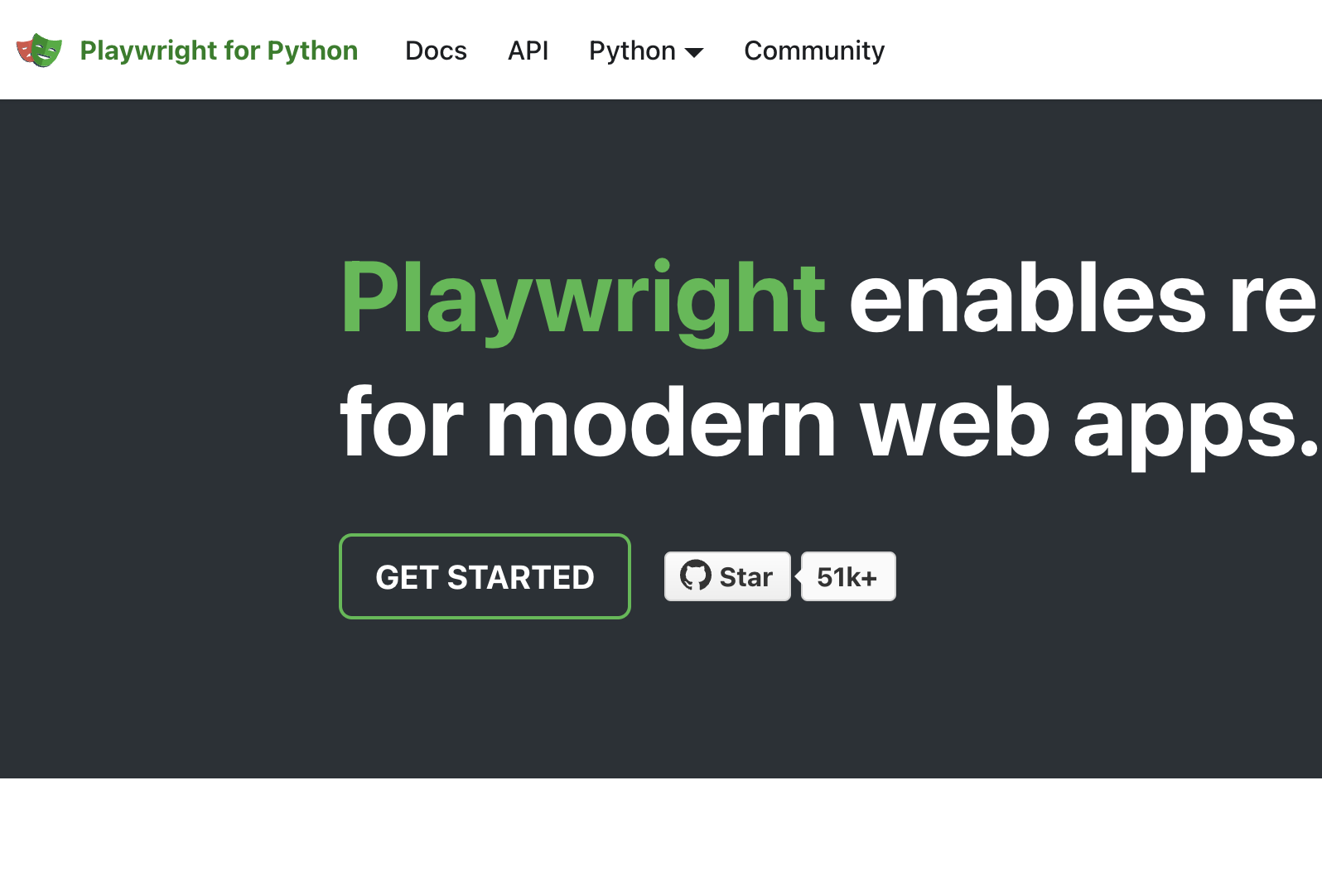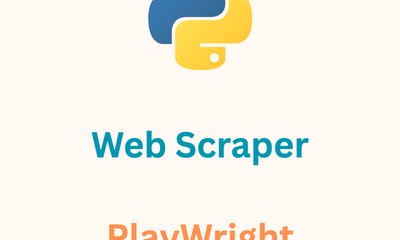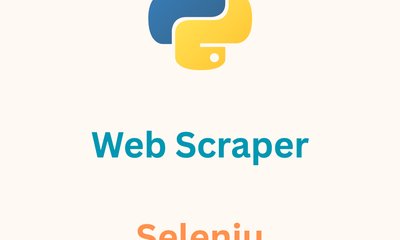Robot Framework: Simplifying Test Automation
By JoeVu, at: May 25, 2023, 8:21 p.m.
Estimated Reading Time: __READING_TIME__ minutes


1. Introduction
Test automation plays a crucial role in software development, helping teams improve efficiency and ensure the quality of their products. In this article, we'll explore Robot Framework, an open-source automation framework that offers a range of features and benefits.
We'll delve into many aspects including its pros and cons, key features, installation instructions, code examples, advanced topics, tips and tricks, and a little deeper insights of data-driven testing. We'll also compare Robot Framework with other popular tools and provide some recommended articles for further reading.
2. Pros and Cons
Robot Framework, like any tool, has its own set of advantages and disadvantages. Understanding these can help you assess whether it's the right fit for your automation needs.
Pros
- Easy-to-read syntax and tabular format facilitate collaboration between testers and developers. The human-readable nature of the framework's syntax makes it accessible even to non-technical team members.
- Keyword-driven approach promotes modular and reusable test cases. Test cases are composed of reusable keywords representing individual actions, making test maintenance and scalability easier.
- Data-driven testing capabilities allow for increased test coverage and flexibility. With Robot Framework, you can execute the same test case with different input data sets, leading to more comprehensive testing.
- Rich set of built-in libraries simplifies common automation tasks. The framework provides a wide range of libraries for handling files, databases, network communication, web testing, and more, reducing the need for writing custom code from scratch.
- Extensibility through custom libraries and integrations with external tools. Robot Framework allows you to create your own custom libraries or integrate with external tools, tailoring the framework to suit your specific automation requirements.
- Detailed test execution reports aid in analysis and issue identification. Robot Framework generates comprehensive reports that provide logs, statistics, and HTML reports, enabling testers to analyze test results effectively.
Cons
- Requires Python installation and basic programming knowledge. As Robot Framework is implemented in Python, users need to have Python installed and possess basic programming skills to create custom libraries or keywords.
- Limited support for certain advanced testing scenarios. While Robot Framework covers a wide range of testing needs, there may be some specialized testing scenarios where other tools might be better suited.
- Steep learning curve for individuals new to test automation. Although Robot Framework simplifies the test creation process, newcomers to test automation might require some time and effort to become proficient in utilizing the framework effectively.
3. Key Features
Robot Framework offers a comprehensive set of features that enhance the test automation process. Let's explore some of its notable capabilities:
- Easy-to-Read Syntax: Robot Framework utilizes a tabular syntax that is highly readable and easy to understand, allowing both technical and non-technical team members to collaborate efficiently.
- Data-Driven Testing: With Robot Framework, you can perform data-driven testing by separating test data from test logic. Test cases can be executed with different data sets, increasing test coverage and flexibility.
- Keyword-Driven Testing: Robot Framework promotes a modular approach to test automation by using reusable keywords. Keywords represent atomic test steps or actions, enabling testers to create high-level test cases using a combination of these keywords.
- Built-in Libraries: Robot Framework comes with a rich set of built-in libraries that cater to various testing needs. These libraries provide pre-defined keywords and functions, making it easier to handle files, databases, network communication, web testing, and more.
- Extensibility: The framework allows users to extend its functionality by creating custom libraries or integrating with external libraries and tools. This extensibility enables users to adapt Robot Framework to their specific testing requirements.
- Test Execution and Reporting: Robot Framework provides detailed test execution reports, including logs, statistics, and HTML reports. These reports assist testers in analyzing test results, identifying issues, and tracking the overall progress of test automation efforts.
- Integration Capabilities: Robot Framework integrates well with other testing tools and systems. It supports integrations with Continuous Integration (CI) systems, version control systems, test management tools, and more, enabling seamless collaboration within the development ecosystem.
4. Installation Instructions
To start working with Robot Framework, you need to install it on your system. Follow these steps to get up and running:
Step 1
Install Python: Before installing Robot Framework, ensure that Python is installed on your system. Visit the official Python website and download the latest stable version compatible with your operating system.
Step 2
Install Robot Framework: Once Python is installed, open a command prompt or terminal and execute the following command to install Robot Framework: pip install robotframework
Step 3
Install Required Libraries: Depending on your testing needs, you may need to install additional libraries. For example, to perform web testing, you can install the SeleniumLibrary by running pip install robotframework-seleniumlibrary
Step 4
Verify the Installation: After the installation is complete, verify that Robot Framework is installed correctly by running robot --version in the command prompt or terminal. You should see the version number displayed if the installation was successful.
5. Examples with Code Snippets
Here are a few code examples to demonstrate how Robot Framework test cases are structured and how various features can be utilized:
Example 1:
Creating a Basic Test Case
*** Test Cases ***
Simple Example
Open Browser https://www.example.com chrome
Page Should Contain Element id=example-element
Click Element id=example-element
Page Should Not Contain Element id=example-element
Close Browser
Example 2:
Data-Driven Testing with Test Data Tables
*** Settings ***
Library SeleniumLibrary
*** Test Cases ***
Data-Driven Example
[Arguments] ${username} ${password}
Open Browser https://www.example.com chrome
Input Text id=username-field ${username}
Input Text id=password-field ${password}
Click Button id=login-button
Page Should Contain Welcome, ${username}
Close Browser
*** Test Cases ***
| ${username} | ${password} |
| joe | nana-hachi |
| snowy | 271982 |
Example 3:
Using Built-in Libraries for Web Testing:
*** Settings ***
Library SeleniumLibrary
*** Test Cases ***
Web Testing Example
Open Browser https://www.example.com chrome
Click Link xpath=//a[contains(text(),'About')]
Page Should Contain About Us
Close Browser
6. Advanced Topics
In this section, we'll explore some advanced topics that can enhance your Robot Framework skills:
- Working with Custom Libraries: Learn how to create your own custom libraries to extend Robot Framework's functionality and tailor it to your specific requirements.
- Creating Custom Keywords: Discover how to create custom keywords to encapsulate complex test steps and improve test case readability.
- Parallel Test Execution: Explore techniques for executing test cases in parallel, speeding up the overall test execution process.
- Test Setup and Teardown: Learn how to define setup and teardown steps that run before and after each test case, ensuring proper test environment initialization and cleanup.
- Resource Files and Variables: Understand how to utilize resource files and variables to manage test data, configurations, and reusable test assets efficiently.
7. Other Similar Packages
While Robot Framework is a powerful tool, it's worth mentioning other alternatives that you might consider for test automation:

- Selenium: Selenium is a popular automation framework specifically designed for web application testing. It provides a range of features and supports multiple programming languages.
- Cucumber: Cucumber is a behavior-driven development (BDD) tool that allows test scenarios to be written in a human-readable format. It emphasizes collaboration between testers, developers, and stakeholders.
- Playwright: Playwright is a relatively newer addition to the test automation landscape. It is a powerful and cross-browser automation tool that provides a unified API for automating web browsers such as Chrome, Firefox, and Safari. Playwright offers robust support for modern web technologies and has gained popularity for its ease of use and powerful features.

8. Comparison with Other Tools
In this section, we'll compare Robot Framework with Selenium and Cucumber, highlighting why Robot Framework might be the preferred choice.
- Robot Framework vs. Selenium: Both Robot Framework and Selenium are widely used for web test automation. However, there are some notable differences between the two. Robot Framework offers a higher-level, keyword-driven approach with an easy-to-read syntax, making it accessible to non-technical users and promoting collaboration between testers and developers. Selenium, on the other hand, provides a lower-level, code-based API and is highly flexible, allowing more granular control over web elements and actions. Robot Framework's extensive built-in libraries simplify common automation tasks, reducing the need for writing code from scratch, while Selenium provides a broader range of language bindings, making it compatible with multiple programming languages. Ultimately, the choice between Robot Framework and Selenium depends on factors such as the skill set of the team, the level of technical control required, and the preference for a keyword-driven or code-driven approach.
- Robot Framework vs. Playwright: Playwright is a modern test automation tool that provides a unified API for automating web browsers, including Chrome, Firefox, and Safari. Playwright focuses on cross-browser testing and offers robust support for modern web technologies, such as Single Page Applications (SPAs) and Progressive Web Apps (PWAs). Robot Framework, on the other hand, is a versatile automation framework that supports a wide range of testing needs beyond just web testing, including API testing, database testing, and more. While Playwright's main focus is browser automation, Robot Framework provides a more comprehensive solution for various types of test automation scenarios. Playwright's strength lies in its powerful browser automation capabilities, while Robot Framework's strength lies in its keyword-driven approach, extensive libraries, and support for diverse automation requirements. When selecting between Robot Framework and Playwright, consider whether your primary focus is on web browser automation or if you require a more versatile framework that covers multiple testing aspects.
- Robot Framework vs. Cucumber: Robot Framework and Cucumber share a common focus on collaboration and readability. However, Robot Framework's tabular syntax and availability of built-in libraries provide a more streamlined and comprehensive solution, catering to a wider range of testing needs.
9. Tips and Tricks
- Utilize Variable Files: Instead of hard-coding values within your test cases, consider using variable files. Variable files allow you to define and manage test data separately, making it easier to update and maintain your test cases. You can create variables for URLs, login credentials, test configurations, or any other frequently used data.
- Leverage Tags: Tags are a powerful feature in Robot Framework that allow you to categorize and organize your test cases. By assigning tags to your test cases, you can easily filter and execute specific subsets of tests based on tags. This is especially helpful when dealing with large test suites or when targeting specific areas of your application for testing.
- Reuse Keywords: Embrace the modular nature of Robot Framework by creating reusable keywords. Instead of duplicating code within test cases, encapsulate common actions or test steps into keywords. This promotes code reusability, simplifies test maintenance, and improves test case readability.
- Use Test Templates: Test templates enable you to define reusable test case patterns. By using templates, you can create a common structure for your test cases, reducing the need to repeat similar steps across different tests. Test templates enhance consistency and make it easier to scale your test suite.
- Take Advantage of Built-in Libraries: Robot Framework offers a wide range of built-in libraries for various purposes, such as SeleniumLibrary for web testing, DatabaseLibrary for database interactions, and OperatingSystem for file operations. Explore these libraries and leverage their functionalities to streamline your test automation tasks. Check the Robot Framework documentation to discover the available libraries and their capabilities.
- Implement Test Setup and Teardown: Test setup and teardown steps are executed before and after each test case, respectively. Use these steps to initialize the test environment, set up preconditions, or clean up after the test. This ensures a consistent test execution environment and improves test reliability.
- Integrate with Continuous Integration (CI): Integrate Robot Framework with your CI system to automate the execution of test suites. CI integration enables you to trigger test runs automatically upon code changes or scheduled intervals, providing fast feedback on the quality of your application. Popular CI systems such as Jenkins, Travis CI, or GitLab CI/CD can be used in conjunction with Robot Framework.
- Explore Custom Libraries: Robot Framework allows you to create custom libraries using Python. If the built-in libraries don't fully meet your requirements, you can develop your own libraries to extend the capabilities of Robot Framework. Custom libraries enable you to integrate with external systems, implement complex business logic, or interact with specialized APIs.
- Regularly Review and Refactor Test Cases: As your test suite grows, it's important to review and refactor your test cases periodically. This ensures that the test suite remains maintainable, reduces redundancy, and improves overall efficiency. Consider performing code reviews and involving the entire team in the maintenance process.
- Stay Updated and Engage with the Community: Robot Framework has an active and supportive community. Stay updated with the latest releases, bug fixes, and new features by following the official website and community forums. Engage with the community to seek guidance, share experiences, and learn from others.
By applying these tips and tricks, you can optimize your use of Robot Framework, improve test automation efficiency, and create robust and maintainable test suites.
10. Data-Driven Testing with Robot Framework
Data-driven testing is a powerful technique that allows you to execute a single test case with multiple sets of test data. It enables efficient testing of various scenarios and data combinations, reducing the effort required to write and maintain individual test cases. Robot Framework provides excellent support for data-driven testing, making it easy to iterate over datasets and perform validations based on different input values.
One common use case for data-driven testing in Robot Framework is testing login functionality with different user credentials. Instead of writing separate test cases for each user, you can create a single test case that loops through a table of usernames and passwords. This allows you to execute the same login test logic with various combinations of credentials, verifying that the login process functions correctly for different users.
Here's an example of a data-driven test case for login functionality:
*** Settings ***
Library SeleniumLibrary
*** Variables ***
| ${LOGIN_DATA} | Username | Password |
| | user1 | pass123 |
| | user2 | pass456 |
| | user3 | pass789 |
*** Test Cases ***
Login Test
[Template] Login With Credentials
@{LOGIN_DATA}
*** Keywords ***
Login With Credentials
[Arguments] ${username} ${password}
Open Browser ${URL} chrome
Input Text id=username-field ${username}
Input Text id=password-field ${password}
Click Button id=login-button
Page Should Contain Welcome, ${username}
Close Browser
In this example, the test case "Login Test" uses the "Login With Credentials" keyword as a template. The test data is defined in the "LOGIN_DATA" variable table, which consists of rows representing different sets of usernames and passwords. The test case iterates over each row, passing the username and password values as arguments to the keyword.
Another use case for data-driven testing is validating form input fields with various input combinations. For example, you can create a data-driven test case to test a registration form, where each row in the dataset represents different combinations of input values for fields like name, email, and phone number. This allows you to verify that the form behaves correctly and handles different input scenarios appropriately.
Data-driven testing with Robot Framework improves test coverage, reduces duplication, and enables efficient testing across multiple test scenarios. It enhances the flexibility and maintainability of your test suite by separating the test logic from the test data. By leveraging the power of data-driven testing, you can thoroughly validate your application with minimal effort and ensure its functionality across a wide range of input variations.
11. Conclusion
Test automation is a critical aspect of software development, and Robot Framework provides a user-friendly and versatile solution. With its easy-to-read syntax, extensive libraries, and flexibility, it simplifies the process of creating and executing automated tests. Robot Framework's pros, such as its collaborative nature, data-driven and keyword-driven approaches, and detailed reporting, outweigh its cons. Furthermore, its integration capabilities and extensibility make it a powerful tool in the test automation landscape. By considering Robot Framework for your test automation needs, you can streamline your testing processes and improve the overall quality of your software products.
References:





